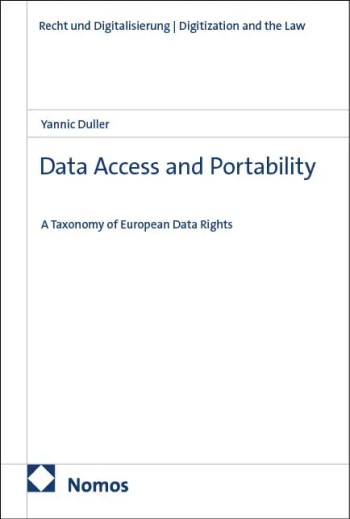
The EU increasingly relies on data access and portability rights as key regulatory tools to address structural power imbalances in the digital economy. However, these rights are scattered across various legal instruments and differ significantly in their form and function, making the legal landscape difficult to navigate.
This book offers a structured analysis of existing rights and proposes a three-part typology that highlights the underlying legal principles and market failures each category is designed to address. It provides readers with a clear and well-founded framework for understanding, interpreting, and further developing EU data law.